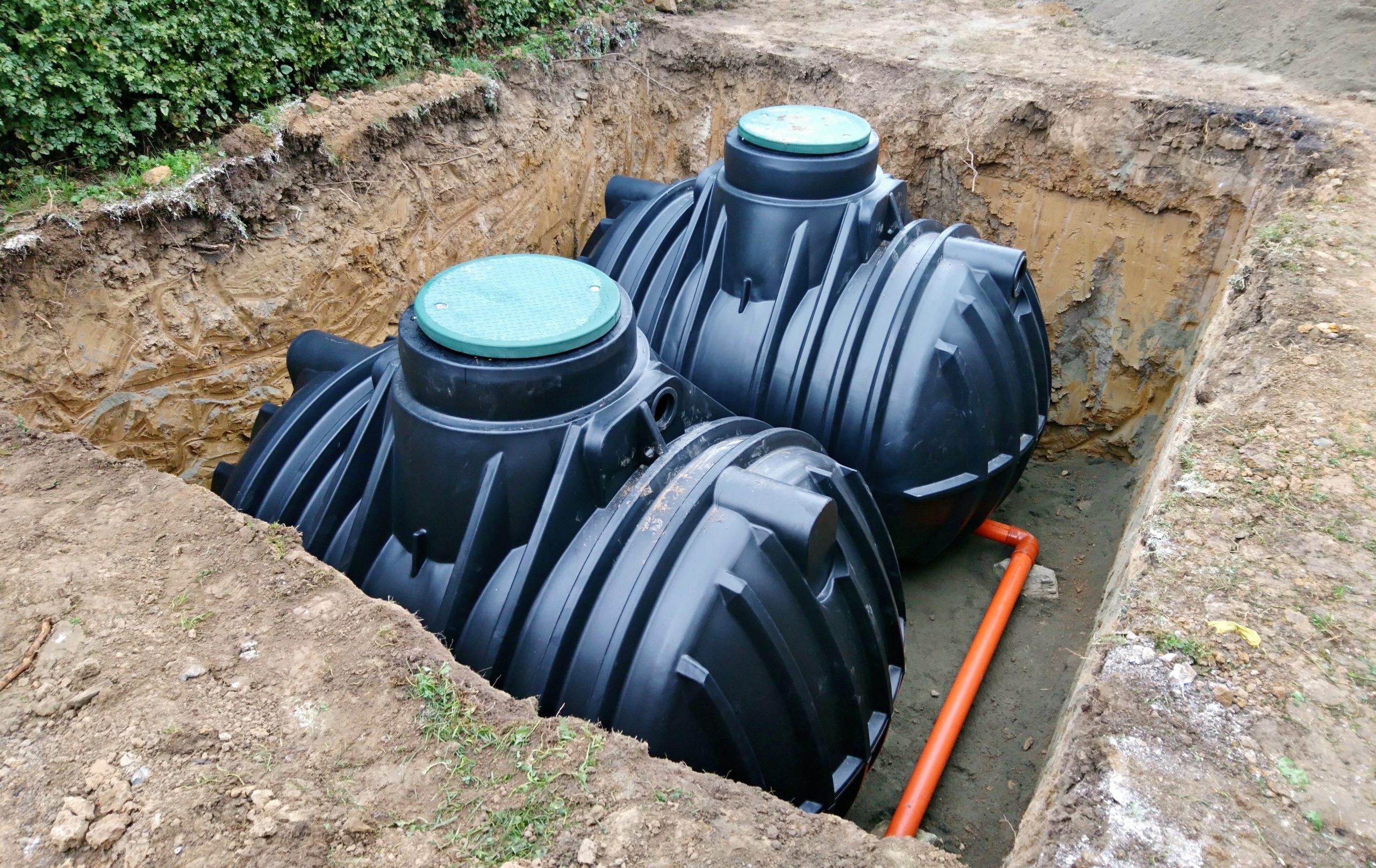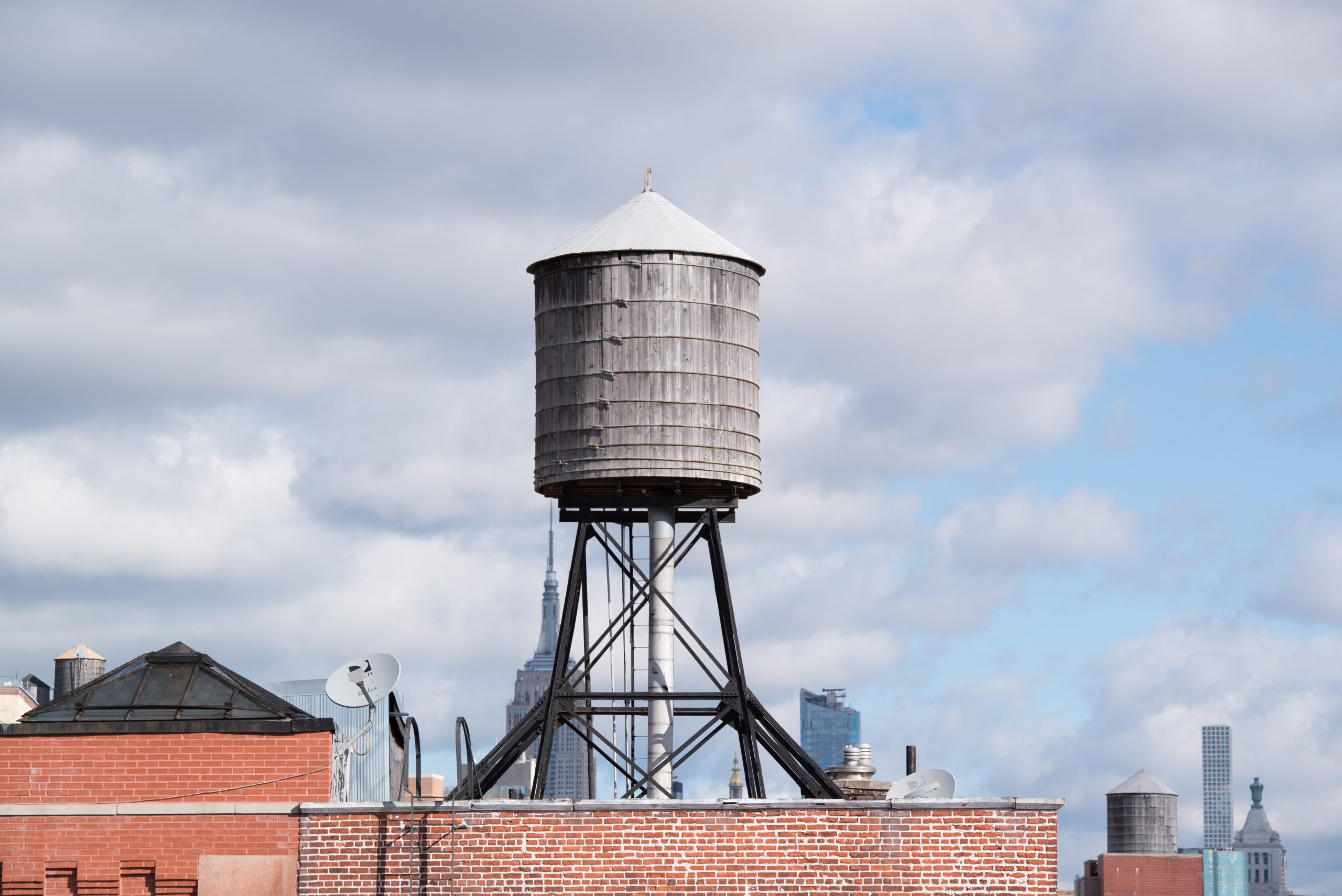Water storage tanks are used all over for various purposes. You’ve probably seen several throughout your life, even in places that might seem unlikely.
Clean water is one of the world’s most precious resources, and water storage tanks play a significant role in conserving, accessing, and transporting it.
If you’ve seen water tanks around or discovered the need for one in your life, you ask what exactly they are, how they work, or why you’d need one. This article delves into everything you need to know about water tanks to answer that question.

Two plastic underground storage tanks placed below ground for harvesting a rainwater.
What Is A Water Storage Tank?
In the most basic context, a water tank is simply a large container or reservoir used to store water for future use. Water tanks used to be made only from steel but are now made from plastic.
They come in various shapes and sizes. You’ll find water tanks that store anywhere from 20 to over 10,000 gallons. The residential, agricultural, industrial, and firefighting sectors often use them.
For What Are They Used?
As mentioned above, people use water tanks for various things. Below is a list of some of their most common applications.
- Transporting Liquids: There are water tanks designed to fit frames and be connected to or held within vehicles that can be used to cart water or other liquids between destinations. Examples include petroleum, gasoline, molasses, and chemicals like carbon dioxide in a liquid state.
- Fire Suppression: Firetrucks are a prime example of how tanks can transport liquids. They’re also examples of pressurized water tanks in an industry, which you’ll read about below.

Rooftop Water Tank in New York City
- Agricultural Watering: Like firetrucks, vehicles in agricultural areas can hold water tanks used to water crops. Alternatively, watering systems may employ pressurized water tanks—fitted with pumps—to deliver water to large areas at once.
- Home Water Systems: Water storage tanks store water in homes for multiple reasons. They can provide pressurized water to the household that draws water from a low-pressure well. They could also act as emergency water storage in case of a burst pipe in the area. Some might even use them to provide water to separate structures on the property, like newly built sheds.
- Collecting Rainwater: The roofs of homes and other buildings are an excellent surface to catch rainwater. It can be collected by connecting the roof gutters to a water tank via a pipe. You can use this to water plants, flush toilets, and, if treated, even for bathing. Doing this reduces the amount of clean tap water used for such purposes, aiding water conservation.
How Does It Work
Essentially, water is somehow fed into the tank and then somehow retrieved when it’s needed. Different types of tanks work differently depending on how they’re being used. The two main types of tanks are atmospheric and pressurized tanks.
Atmospheric tanks get their name because the internal atmosphere matches the external. In other words, they’re plain tanks that don’t do anything special except hold liquids. These tanks are typically used for substances that can be held at ambient conditions, like water and oil. They can also be fitted with pumps or other apparatus to feed the liquid into some systems.
Pressurized tanks use air pressure to store liquids at a greater pressure than atmospheric. They’re often used for substances that require these conditions, like liquid nitrogen. When storing water, these tanks can be used alongside or instead of a pump when connected to a system.
So, these tanks are fed water through some means—usually a well, rainwater, or borehole. The water is then kept in the tank for however long it is needed. For longer periods, it may be necessary to clean or sterilize the water within the tank. When it’s time, the tank is fitted—or permanently fixed with—some means of extracting the water. This can be a pump, valve, or even a simple tap.
What Are Tanks Made Of?
Water tanks are primarily made of steel or plastic. Each material comes with pros and cons.
Steel tanks are usually more robust, durable, and last longer than plastic ones. Steel tanks can also hold significantly more liquid thanks to these properties. The downsides are that they’re usually more expensive and are susceptible to corrosion if not taken care of.
Plastic tanks are more cost-effective than steel tanks, making them a great choice for most residential applications. You also don’t need to worry about corrosion. However, the plastic can become brittle over time, and you won’t find them in sizes as large as steel tanks.
Conclusion
For all the times you’ve seen water tanks around your area and wondered what it’s there for, the reason is likely related to something mentioned in this article.
Water storage tanks are a widely used storage solution for various liquids. They’re used in homes, industries, firefighting, and agriculture to store and deliver water wherever needed. Finally, tanks are usually made from steel or plastic and can be pressurized—the build used typically depends on what it’ll be used for.







